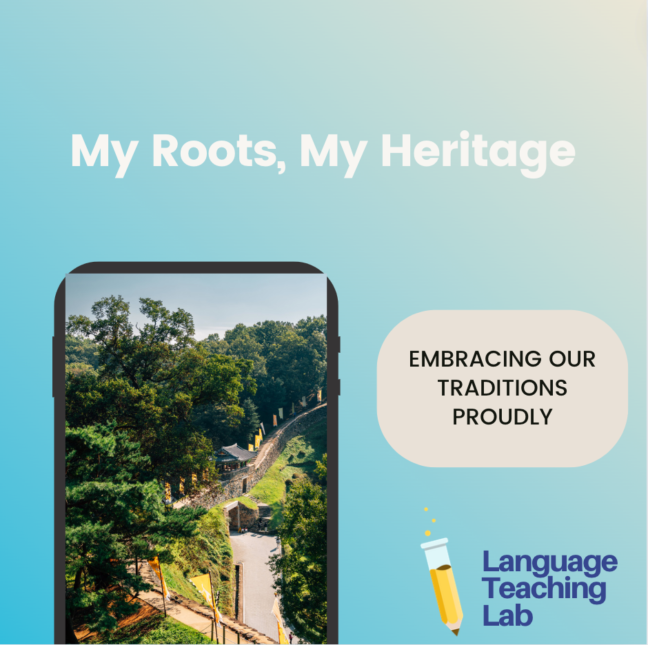If you follow the blog, you may have read R.E.S.T., which stands for relaxing, engaging, serendipity, and trying new things. The “S” for serendipity was for me the highlight last month as I ended up visiting the house of my ancestors (on one side of the family) that dates from the 1700s. It moved me more than I expected and that is how I decided to focus this month on My Roots, My Heritage.
Past, Present, Future
The phrase “Don’t forget where you came from” took a whole new meaning to me. It made me see the past reflected in the present and moving towards the future. All I am now is in part the fruit of the values, beliefs, courage, and hope of my ancestors as well as my own experiences that constantly shape who I am. Learning about our roots is necessary in building our future.
Heritage
As educators, we celebrate ‘Heritage Months’ throughout the year to acknowledge and recognize those who came before us and their contributions. According to the Cambridge dictionary, ‘heritage’ is “the history, traditions, practices, etc. of a particular country, society, or company that exist from the past and continue to be important.”
Another definition found in Family Heritage Blog states “Heritage is a person’s unique, inherited sense of family identity: the values, traditions, culture, and artifacts handed down by previous generations. We absorb a sense of our heritage throughout our lives as we observe and experience the things that make our family unique.”
In celebrating our roots, we get to understand our world and ourselves better. It helps us reflect on our identity, our voices, and our future, as well as the identity and the voices of those who surround us.

LTL Blogs on Identity and Heritage
At Language Teaching Lab we have explored topics related to heritage, roots, and identity in several of our articles such as,
- Visible and Invisible: Teaching Identity in World Languages
- Personal and Professional Experiences Inform my Language Curriculum
- Why We Teach to Describe People the Way We Do
As language educators we have the opportunity to navigate the topic ‘heritage’ in our class for students to understand themselves better as well as understand their place in the world, all while exploring their heritage and roots.
Proficiency Levels
At the same time, we can aim at teaching ‘My Roots, My Heritage’ from an early age and proficiency level. Students progress from the Novice to the Intermediate proficiency levels by answering questions on the topic, such as,
- What is your name/last name?
- Why is that your name/last name?
- Are there any other members of your family you share your name with?
- Where were you born?
- What does the word ‘ancestor’ mean? Who are your ancestors?
- Where were your ancestors born?
- What do you know about your family history?
- What are your family traditions? Talk to your family and find out!
- What food is a tradition in your family? When do you have it? How do you have it? With whom?
- What is your grandparents’ traditional food?
- Do you know what your grandparents’ grandparents’ traditional food was? You may want to expand traditions regarding celebrations, books, types of music, clothing, flowers, places, etc. You get the idea!)
- What do you do every day?
- Do you know what your ancestors did every day? How can you find out?
- What is important to your family?
- Why is it important to understand where you come from?
- Why is it important to connect to your roots?
- How does heritage shape your identity?
- How do you describe your heritage?
I invite you to think about your own roots and heritage and those of your students, to help find our uniqueness and our common humanity.
